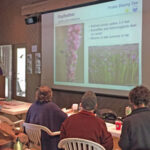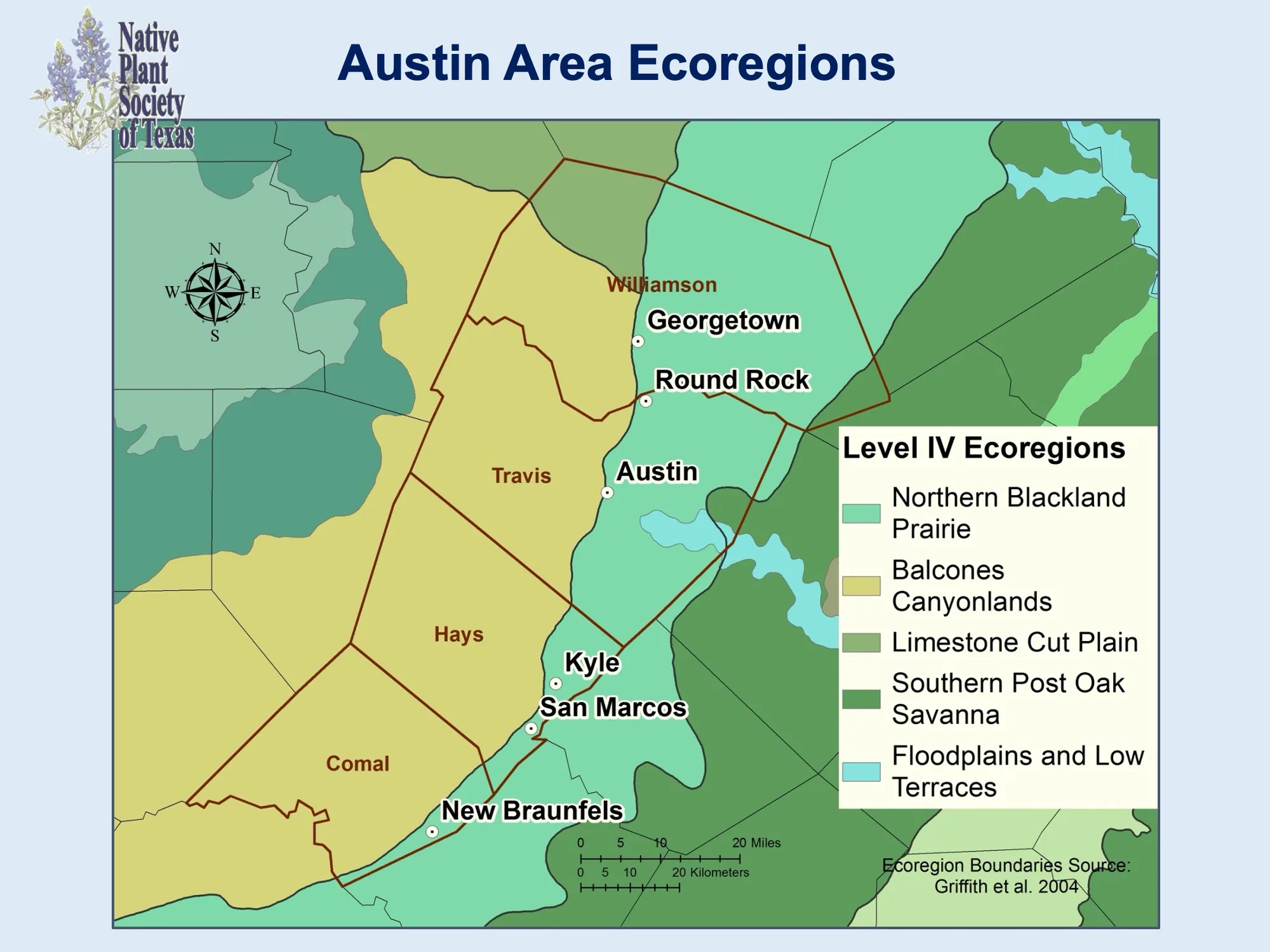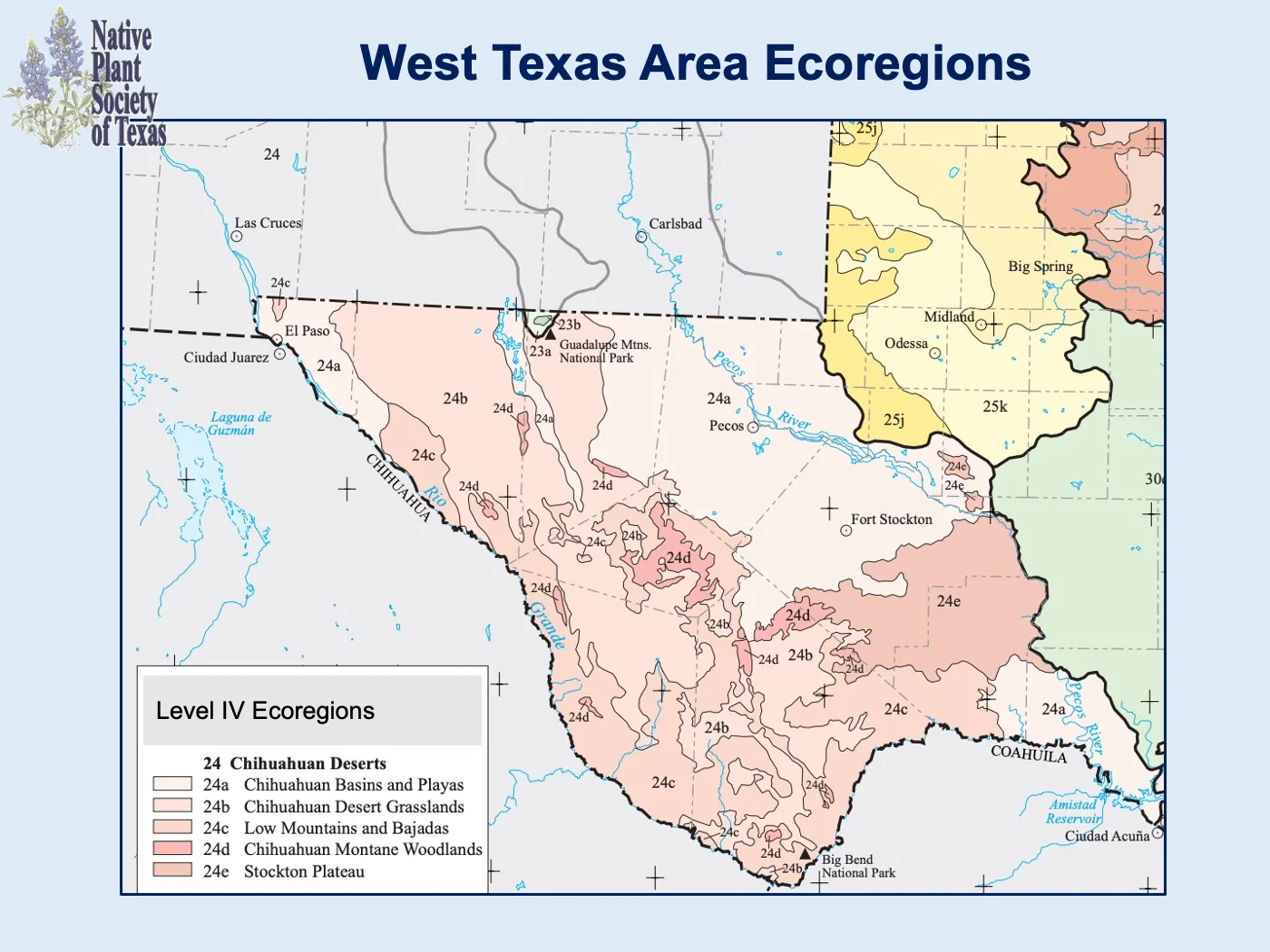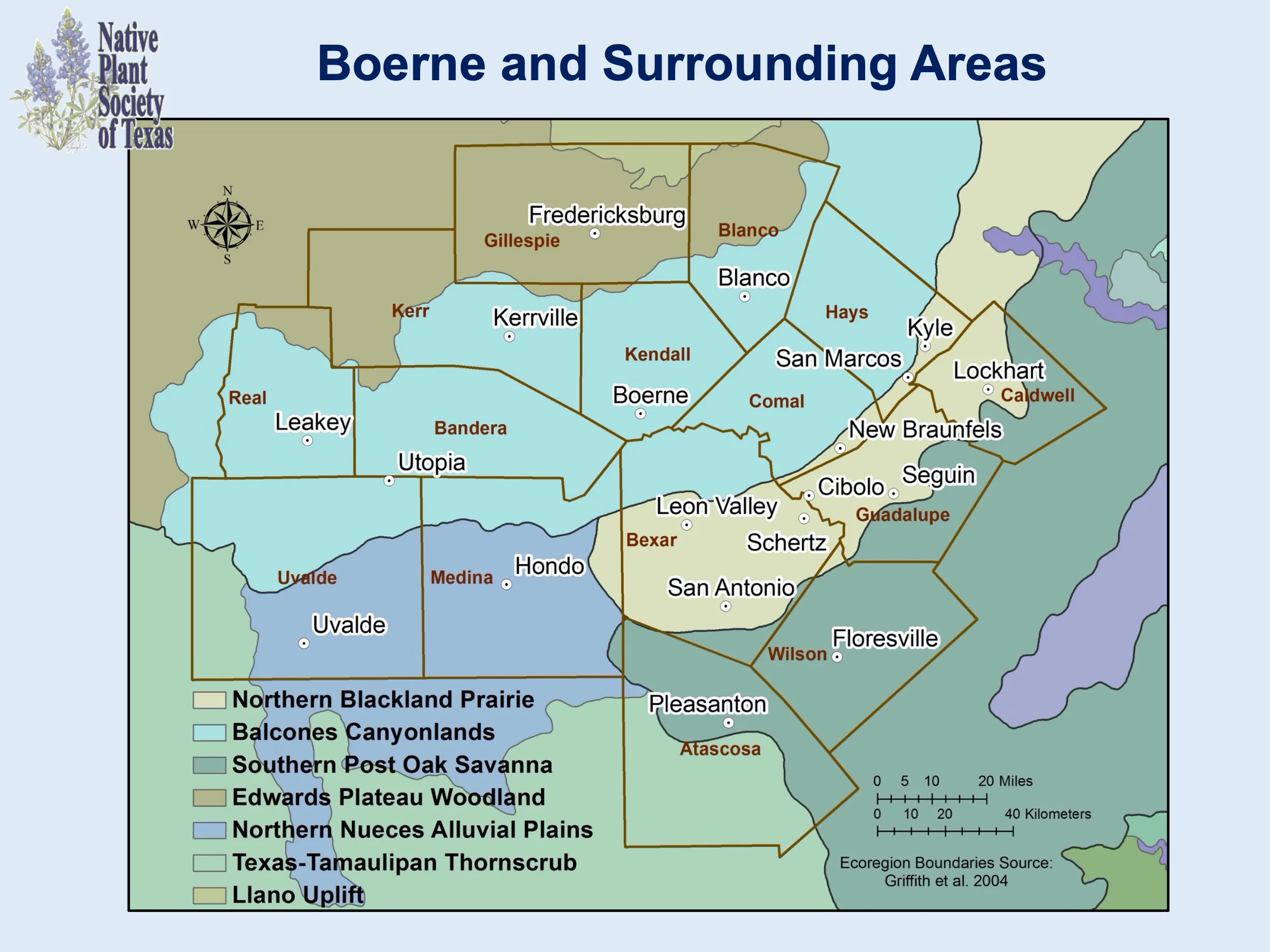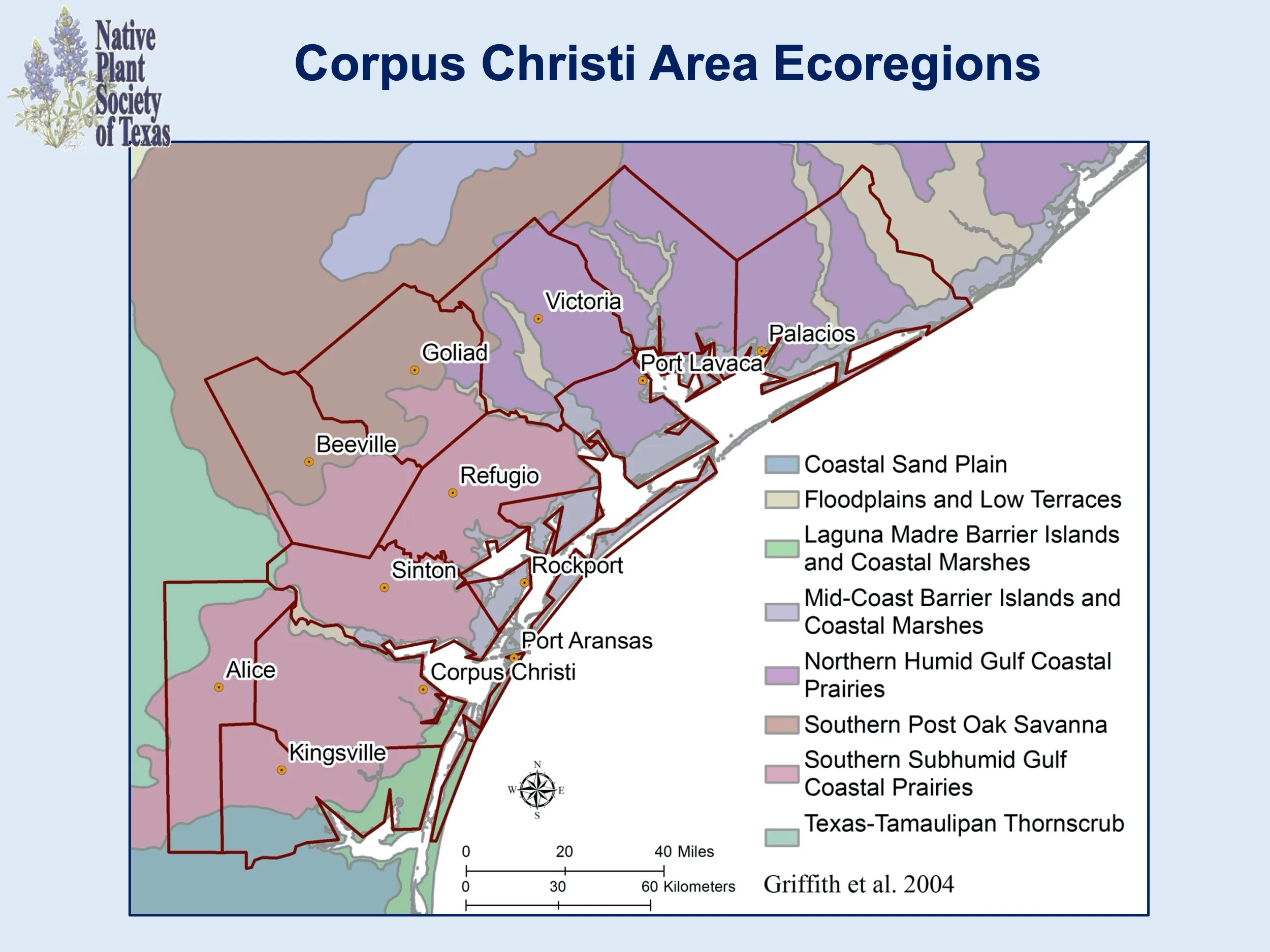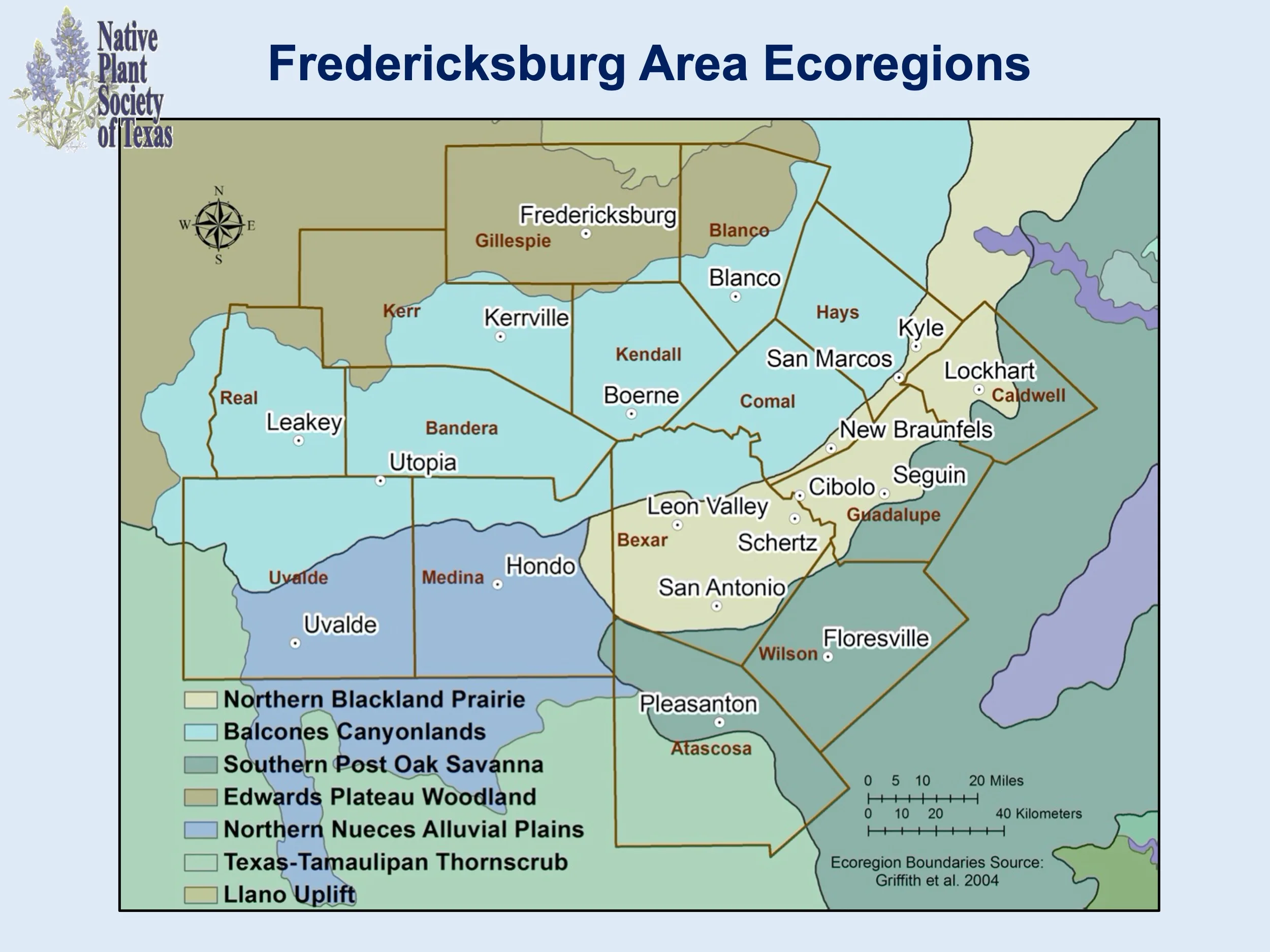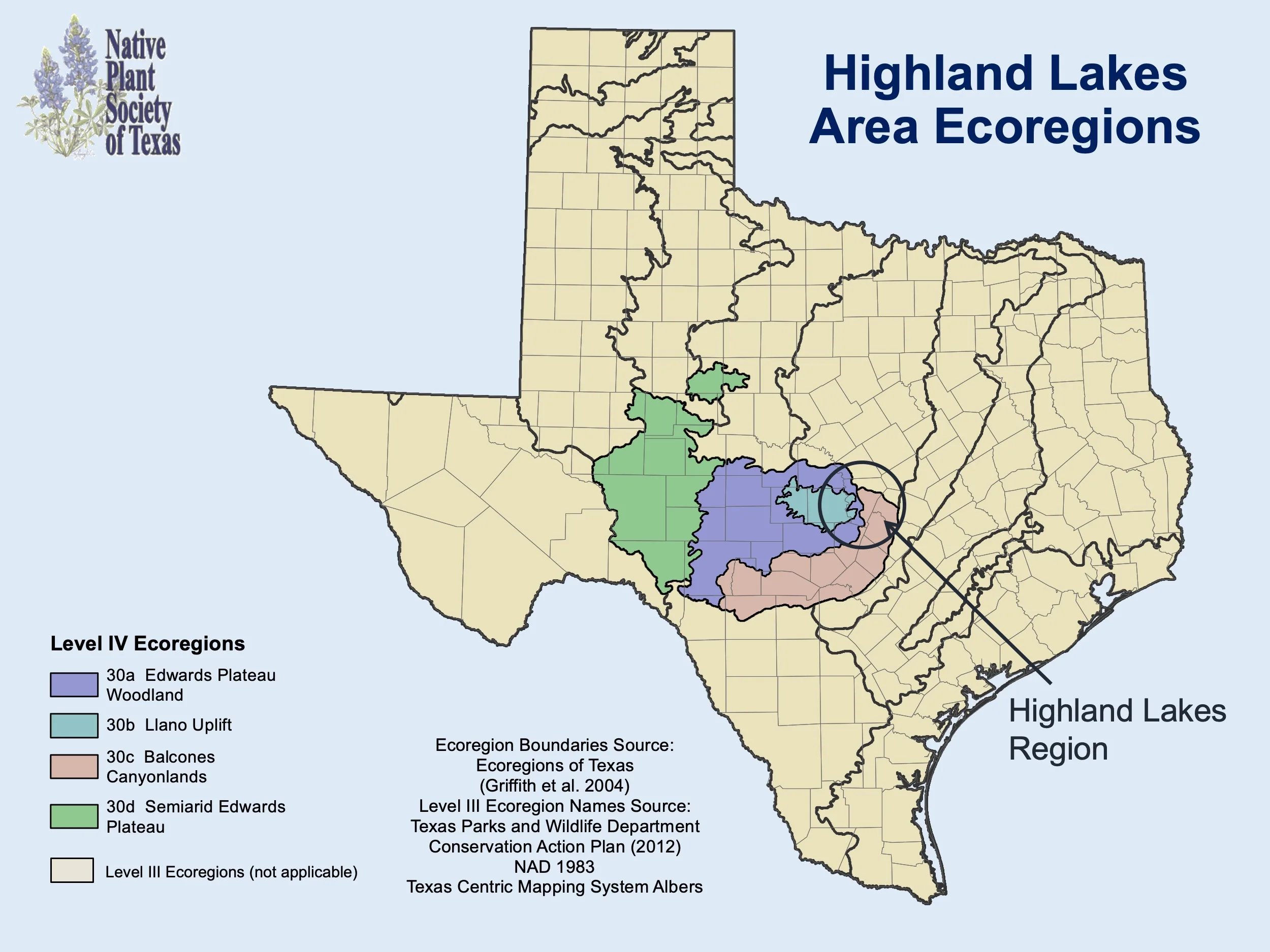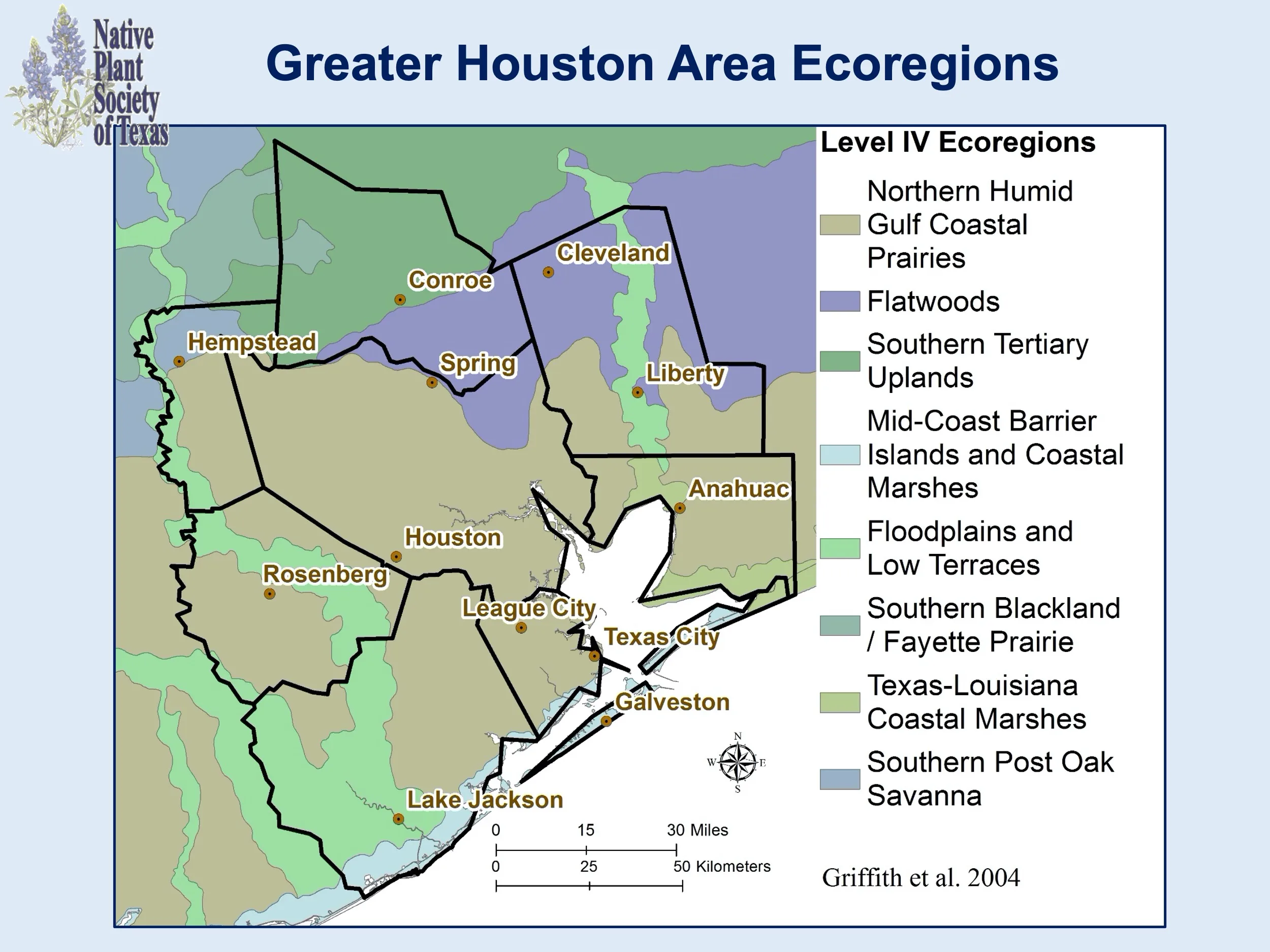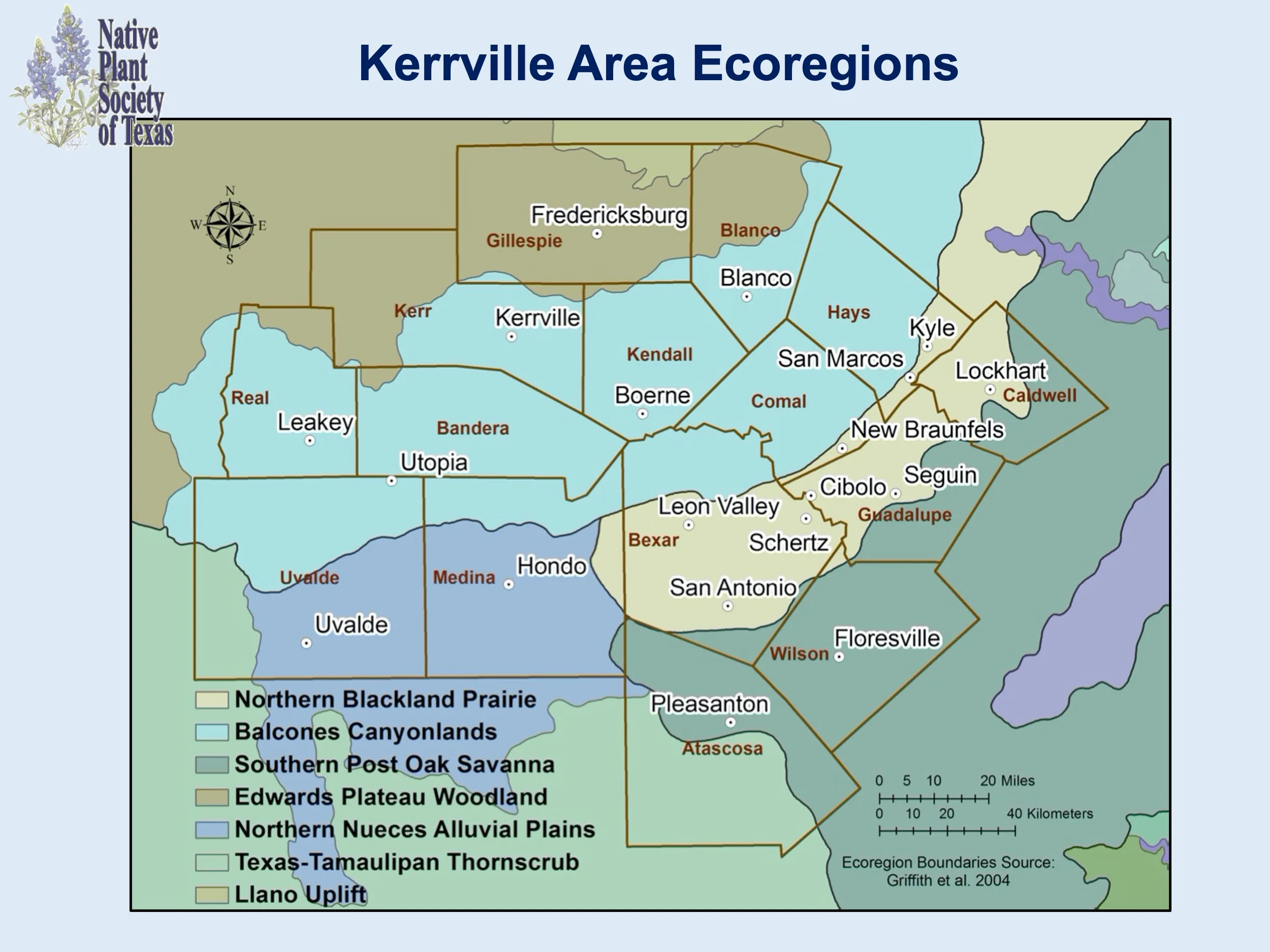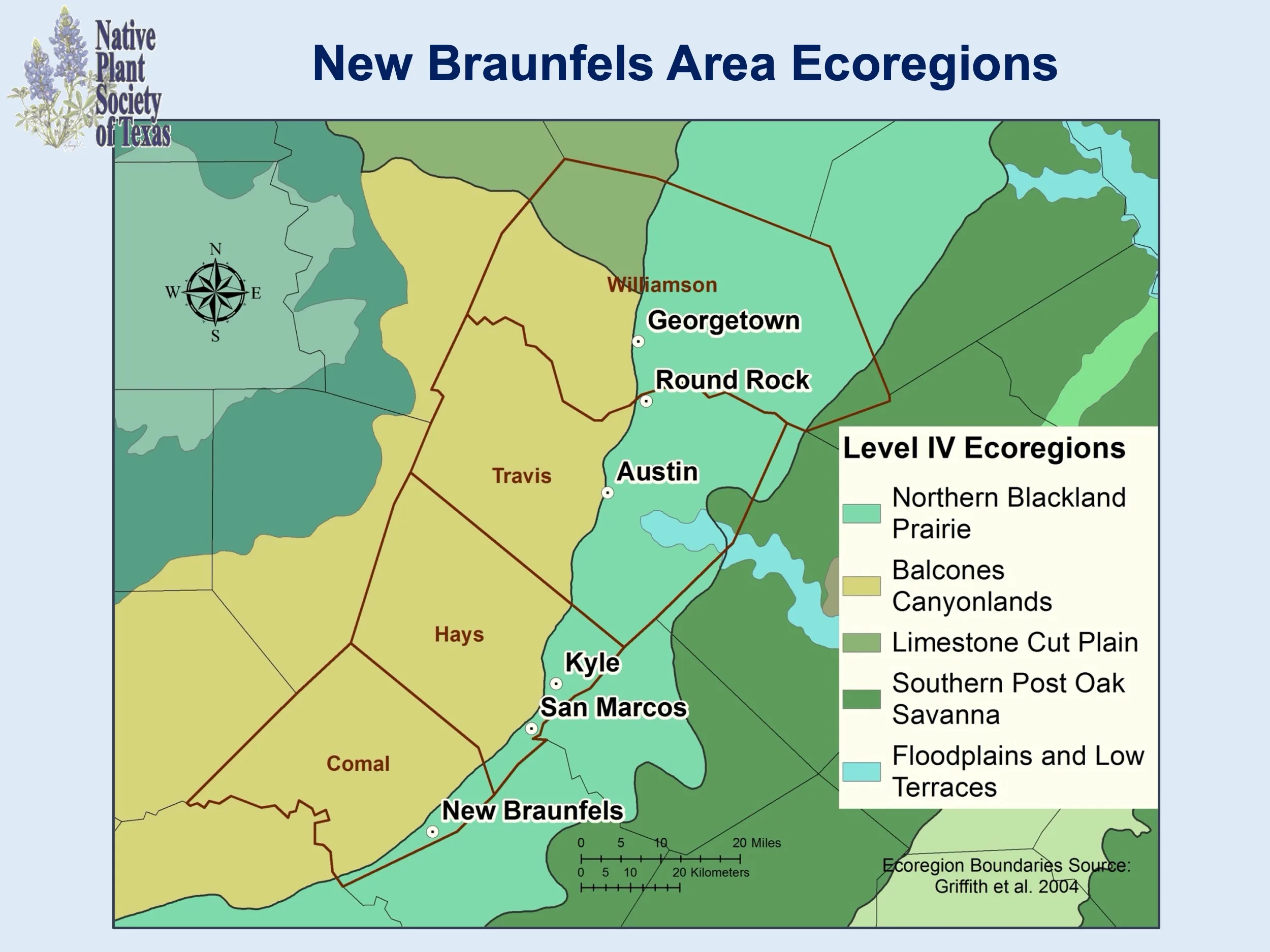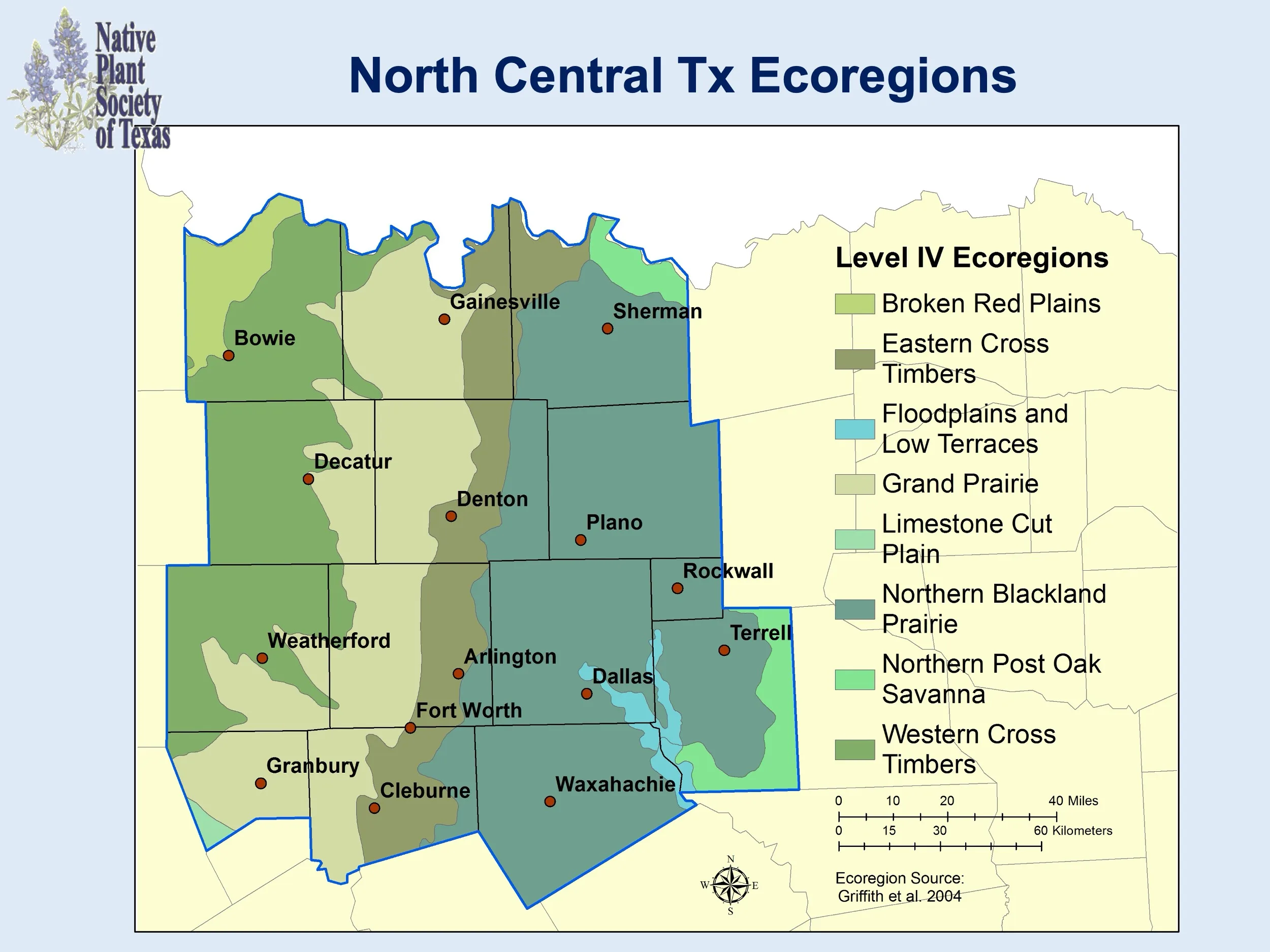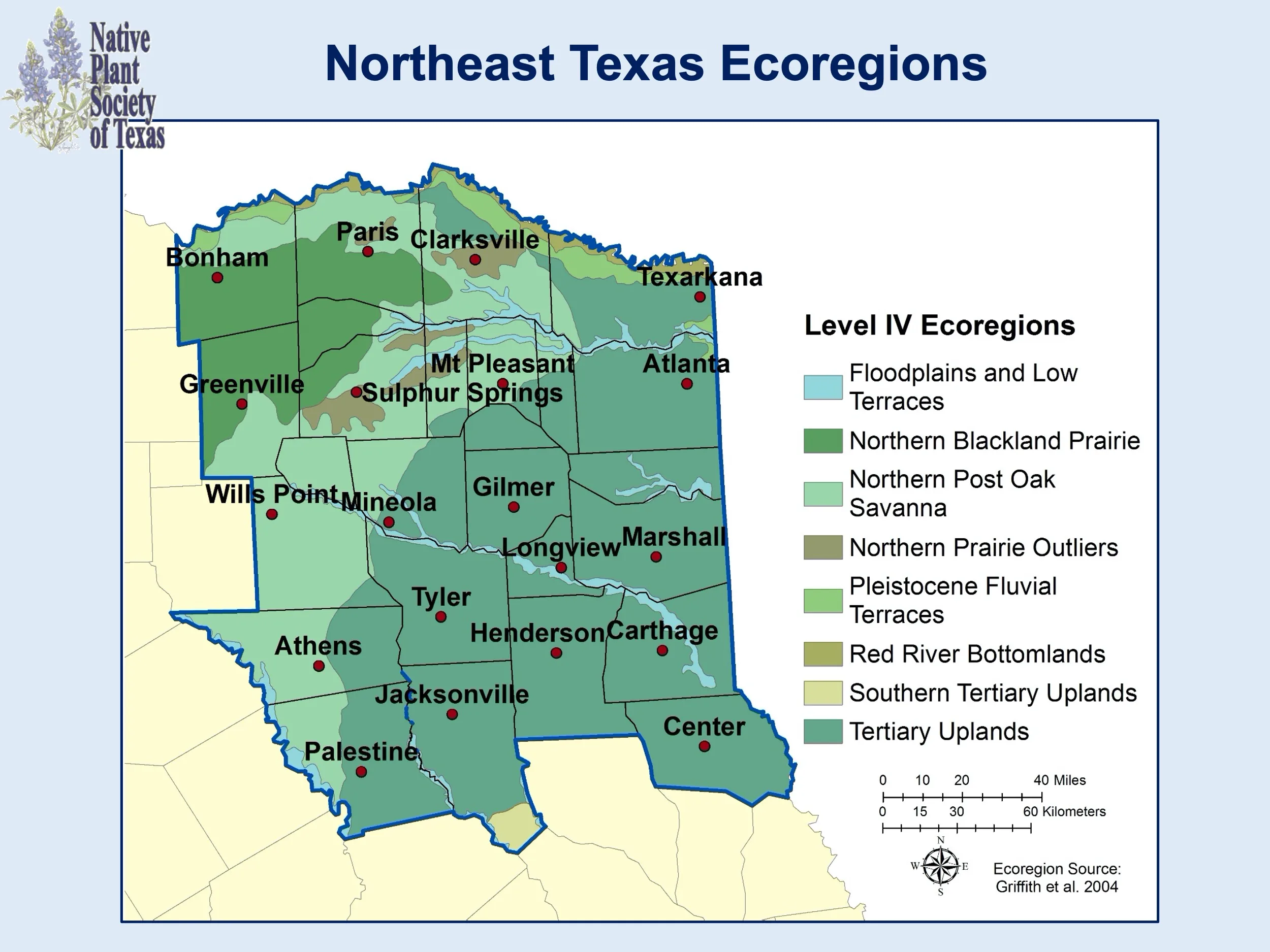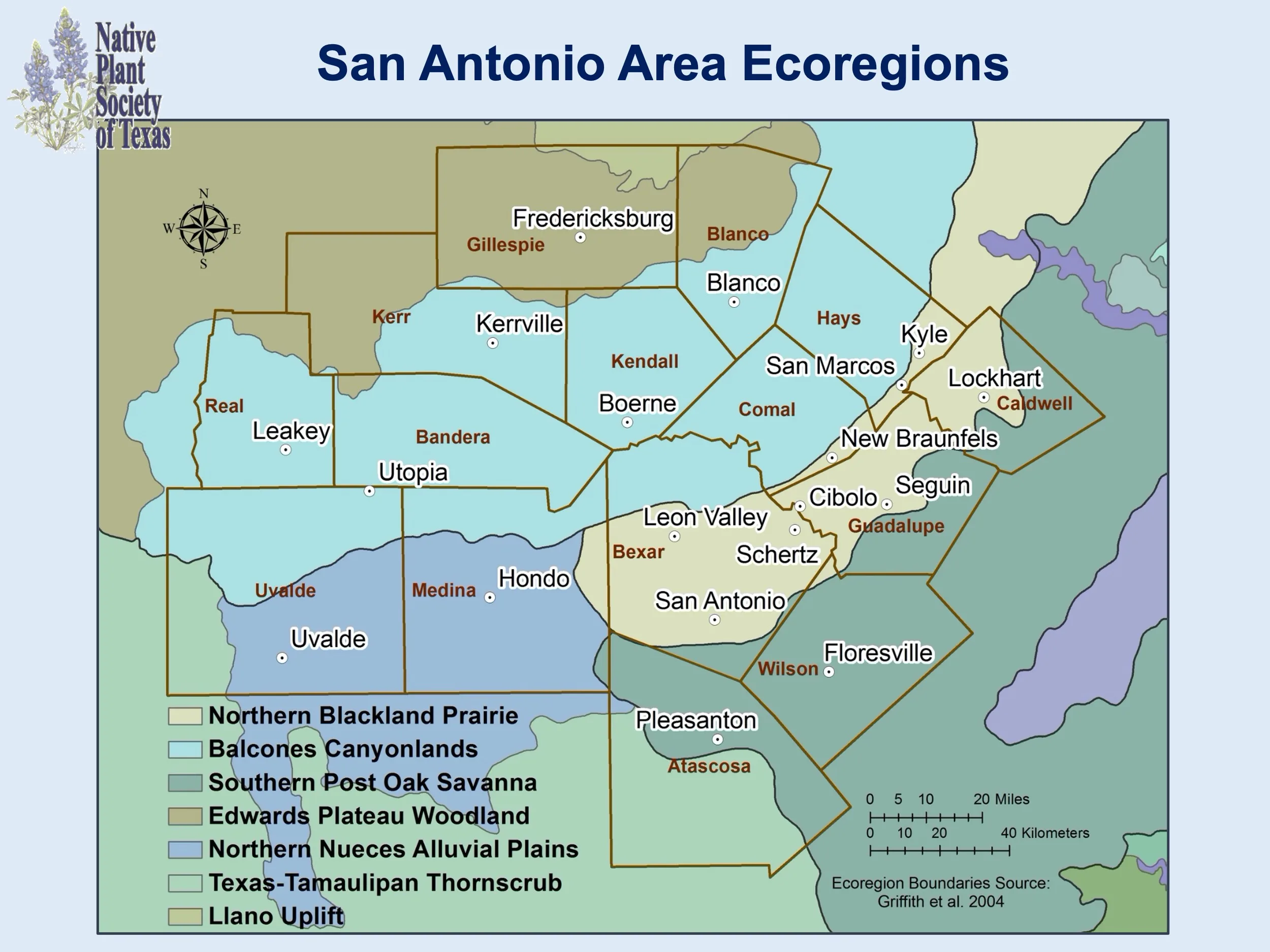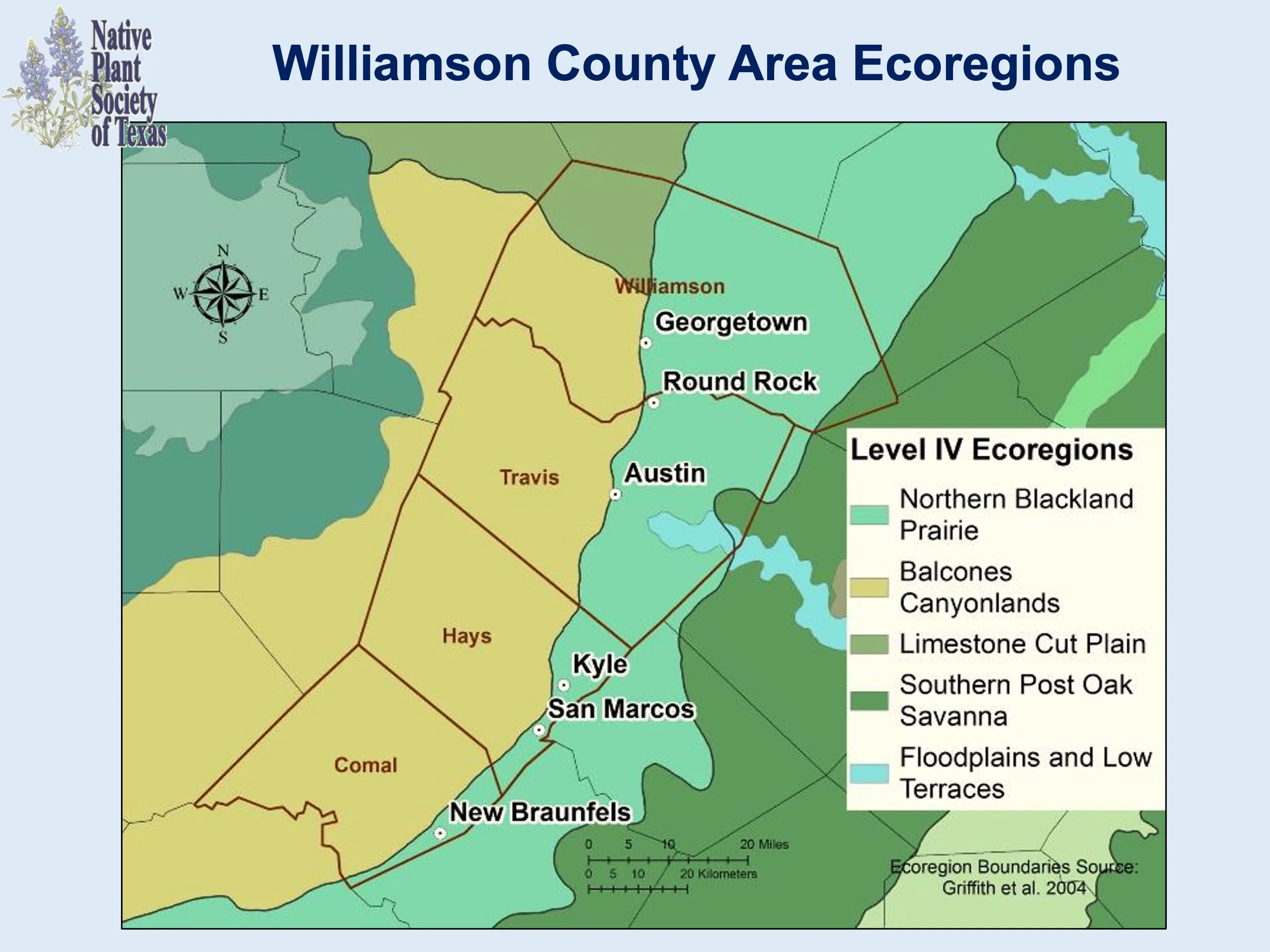These plant lists and our Native Plant Database were developed for the Native Landscape Certification Program (NLCP) for use in the classes taught in that program.
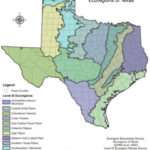
Find your Ecoregion
Don’t know which ecoregion your home or property is in? Use our interactive Texas ecoregion map to find your ecoregion and see plant lists for each ecoregion.
Plant List Instructions
To get a list of native landscape plants that will work in a certain location, first find that location on one of the area maps. Then download the list corresponding to that area.
To best use the NLLCP PDF lists pay close attention to the “native region” column on the list. The abbreviations in this column are defined in the footnotes on each list and are correlated to the Level IV eco-regions shown on the maps. In some cases your location may appear on more than one map. In that event you may use any of the lists associated with your area. Lists were created for use in classes for particular events and are not meant to be exhaustive lists of suitable plants for a location.


